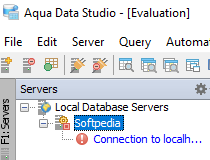

Note here that we have just one instance of HttpClient shared for the entire application. Public static async Task Main ( string args) Private static HttpClient Client = new HttpClient() If we share a single instance of HttpClient then we can reduce the waste of sockets by reusing them: using System Ulrksen and Darrel Miller for pointing me to The Patterns and Practices documents on this. We need to understand what “properly” means and fix the underlying problem instead of tinkering with machine level variables. In fact, decreasing the timeout can lead to other detrimental consequences when applications that properly use HttpClient or similar constructs are run on the server. Searching for that in the Googles will give you some terrible advice about decreasing the connection timeout. : Only one usage of each socket address (protocol /network address/port) is normally permitted. There is a limit to how quickly Windows can open new sockets so if you exhaust the connection pool then you’re likely to see error like: Unable to connect to the remote server

Windows will hold a connection in this state for 240 seconds (It is set by ). Here is a diagram of TCP/IP states I stole from. They are in the TIME_WAIT state which means that the connection has been closed on one side (ours) but we’re still waiting to see if any additional packets come in on it because they might have been delayed on the network somewhere. Huh, that’s weird…the application has exited and yet there are still a bunch of these connections open to the Azure machine which hosts the ASP.NET Monsters website. Proto Local Address Foreign Address State If we pull out the netstat tool and look at the state of sockets on the machine running this we’ll see: C:\ code\ socket> NETSTAT.

NETCoreApp,Version=v1.0Īll work and everything is right with the world. Project socket (.NETCoreApp,Version=v1.0) will be compiled because inputs were modifiedĬompiling socket for. Public static async Task Main(string args)Ĭonsole.WriteLine( "Starting connections") Here is a simple program written to demonstrate the use of HttpClient: Instead of creating a new instance of HttpClient for each execution you should share a single instance of HttpClient for the entire lifetime of the application.

This means that under the covers it is reentrant and thread safe. Although it implements the IDisposable interface it is actually a shared object. The internet is generally in agreement as well.īut HttpClient is different.
#AQUA DATA STUDIO WRAPPING FAILED PATCH CODE#
Secondly, all code you may have seen since…the inception of HttpClient would have told you to use a using statement block, including recent docs on the ASP.NET site itself. In fact, the official docs for using state:Īs a rule, when you use an IDisposable object, you should declare and instantiate it in a using statement. First of all, it’s considered good practice to do so. Really any object which has external resources that must be clean up uses the IDisposable interface.Īnd you can’t be blamed for wanting to wrap it with the using. NET and we use it for everything from database connections to stream writers. The dispose method is called and whatever resources are in use are cleaned up. Once the using block is complete then the disposable object, in this case HttpClient, goes out of scope and is disposed. The using statement is a C# nicity for dealing with disposable objects. The typical usage pattern looked a little bit like this: using( var client = new HttpClient()) NET language then chances are you’ve made use of HttpClient. If the microservies are built in C# or any. There are many options for communicating, but HTTP is an ever popular option. As more services are added and monoliths are broken down there tends to be more communication paths between services. Microservices can be a bear to deal with. My site was unstable and my clients furious, with a simple fix performance improved greatly and the instability disapeared.Īt the same time I actually improved the performance of the application through more efficient socket usage. I’ve been using HttpClient wrong for years and it finally came back to bite me.


 0 kommentar(er)
0 kommentar(er)
